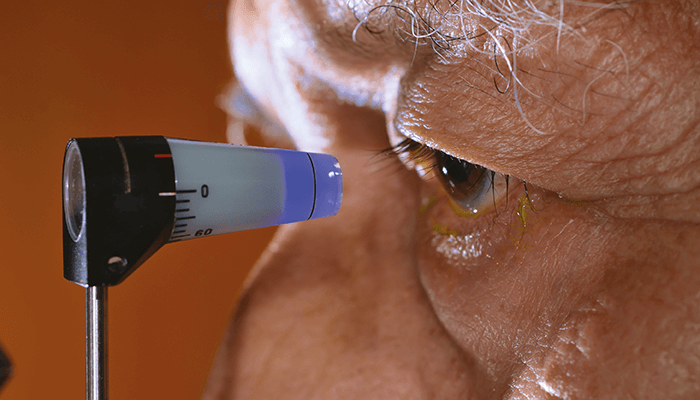
No pressure. Scientists have overcome the challenges of limited size, wireless operations, and cross coupling to design an intelligent, integrated wireless theranostic contact lens capable of in situ monitoring of IOP and on-demand anti-glaucoma drug delivery through the incorporation of two separate moduli (1). This design is highly compact and minimally invasive, allows high-degree integration and frequency separation on the curved and limited surface of a contact lens, and provides a promising system for managing glaucoma.
Sniffin’ Sticks. A cross-sectional study using the Sniffin’ Sticks smell test on 20 primary open-angle glaucoma patients, 20 exfoliative glaucoma patients, and 20 exfoliation syndrome patients to determine the threshold value, and assess the patient’s ability to identify and differentiate between smells showed that the exfoliative glaucoma and exfoliation syndrome groups had reduced smell sensitivity and identification when compared with the primary open angle glaucoma patients and a control group, without glaucoma (2). These results provide new insights into neural degeneration and pseudoexfoliation.
Raised risk. Through a retrospective review of the medical records of 122 eyes of 122 patients who met the Hodapp-Parrish-Anderson criteria for POAG, researchers found long-term fluctuations in IOP and disc hemorrhage to be independent and additive risk factors of visual field progression in advanced glaucoma, even at low IOPs (3). For patients in whom these risk factors are identified, close monitoring and vigorous treatment is necessary.
Calculating glaucoma. Aiming to clinically validate the performance of two OCT-based glaucoma diagnostic calculators (GDCs), scientists conducted a retrospective, consecutive sampling of POAG patients, glaucoma suspects, and controls (4). Using the OCT-based GDCs, they were able to identify 30 percent more cases than conventional pRNFL inferior OCT classification in both groups, indicating that GDCs could be used in clinical practice to improve diagnoses.
Virtual viewpoints. A cross-sectional, anonymized online questionnaire was distributed to all European Glaucoma Society-registered specialists with the aim of analyzing and characterizing their current use, characteristics and perspectives on virtual glaucoma clinics (VGCs) (5). The researchers found that a significant proportion of European glaucoma units are currently using VGCs while others are considering implementing them. Of those who use them, the majority reported higher patient acceptance compared with traditional care. Financial reimbursement and consensus guidelines are likely crucial steps needed for VGC uptake.
In other news…
Studying sodium. Frequent dietary salt intake was potentially associated with increased POAG risk in antihypertensive salt users of the Thessaloniki Eye Study looking at incidence (6).
Comparing characteristics. OCT-defined parapapillary beta and gamma zones exhibit different characteristics for primary open angle glaucoma and primary angle closure glaucoma (7).
Bias busting. Properly designed prospective trials are needed to identify mechanisms driving disparities in treatment and address bias in glaucoma management for populations of African descent (8).
Simultaneous supervision. Remote monitoring of visual field testing allowed technicians to supervise testing of two patients at the same time with the same performance and reliability (9).
Grading Ghanaians. The incidence and rate of visual field progression are high in a longitudinal study of a small cohort of urban Ghanaian subjects with glaucoma (10).
References
- C Yang, et al., Nat Commun, 13, 2556 (2022). PMID: 35581184.
- O Dikmetas, et al., J Glaucoma, 31, 300 (2022). PMID: 35180155.
- JS Lee, et al., J Glaucoma, 31, 310 (2022). PMID: 35283440.
- N Ventura-Abreu, et al., Transl Vis Sci Technol, 11, 14 (2022). PMID: 35848905.
- M Azzopardi, et al., Eye (Lond), [Online ahead of print] (2022). PMID: 35690678.
- VL Tseng, et al., J Glaucoma, 31, 494 (2022). PMID: 35474047.
- K Shang, et al., Sci Rep, 12, 11070 (2022). PMID: 35773326.
- B Siesky, et al., J Glaucoma, 21, 479 (2022). PMID: 35353787.
- RS Meshkin, et al., J Glaucoma, 31, 488 (2022). PMID: 35763679.
- JC Mwanza, et al., J Glaucoma, 31, 503 (2022). PMID: 35019875.
